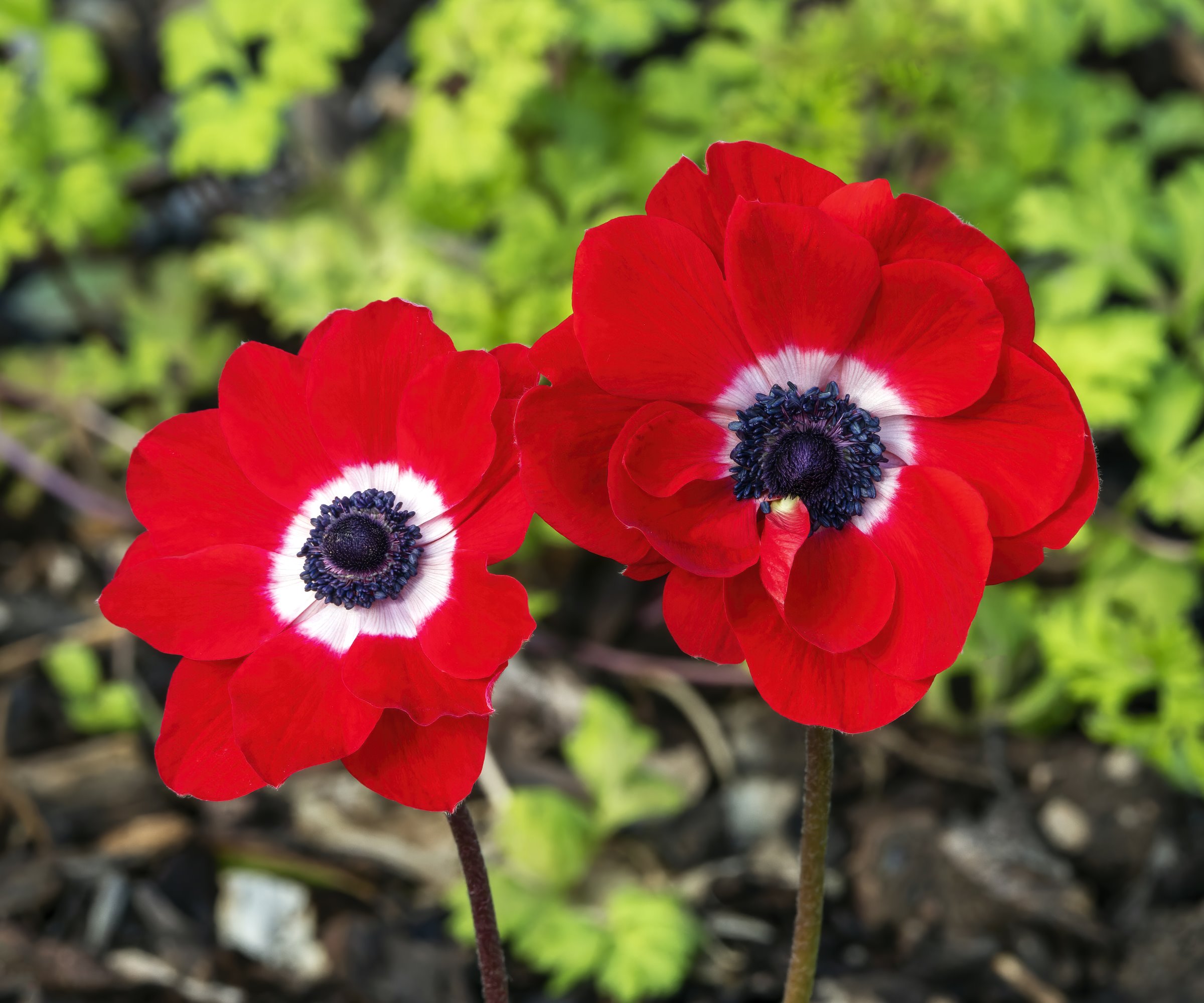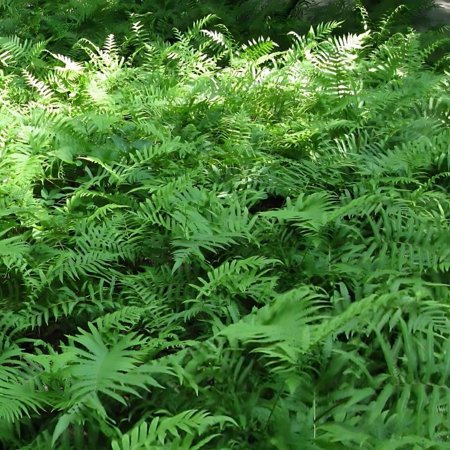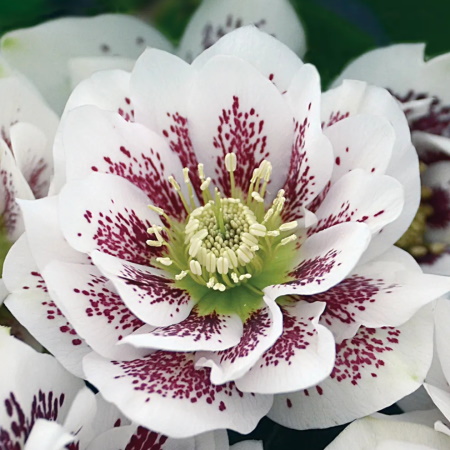Deer-resistant shade plants – 5 plants that will grow in darker spots undisturbed by wildlife
It's possible to fill difficult corners of your yard with plants that can hide from the sun and won't be targeted as food


Gardeners across the country face the challenge of protecting plants from deer. Although they're beautiful creatures and you might be happy to let them roam your yard, deer will also graze on a range of edible and ornamental plants.
Luckily, it's quite easy to deer-proof your yard, or areas of your yard, with deer-resistant plants - the plants that deer generally leave alone. If you want to welcome this wildlife but want to make sure your planting doesn't suffer for it, you need to cover all areas. The good news is there are plenty of deer-resistant shade plants for those darker spots in your yard.
Whether you're after deer-resistant ground cover plants for beneath trees or need container plants deer won't much, we've got you covered. Here are the best deer-resistant shade plants.

5 deer-resistant shade plants
From foliage to flowers, there is a wide range of plants deer won't interfere with. They are put off by certain plants for a number of reasons; sometimes it's the smell of the plant, sometimes it has a bitter or toxic taste they don't like.
1. Ferns

No shade garden is complete without growing ferns. These shade-lovers are versatile in the yard, thanks to the many varieties of unique fronds. Deer tend to leave them alone due to the toxins found in their foliage.
'Several ferns thrive in the south-central US, particularly the more mesic eastern portions,' says Dr. Mike Arnold, professor of landscape and horticulture at the Texas A&M Department of Horticultural Sciences.
Generally speaking, ferns can be grown across US hardiness zone four to zone eight, but it really depends on the type of fern you're growing.
Design expertise in your inbox – from inspiring decorating ideas and beautiful celebrity homes to practical gardening advice and shopping round-ups.
'Among the most reliable for our region are the native southern wood fern, Thelypteris kunthii, one of the shield ferns which offers vigorous growth two or three feet tall of light-to-medium green fronds,' says Mike.
Whichever fern you grow, make sure to research the coldest temperatures it can endure and put precautions in place to protect plants from frost - like overwintering a Boston fern.

Mike has been with the Texas A&M Department of Horticultural Sciences as a professor of landscape horticulture and in other capacities since 2012 and 1993, respectively. Mike earned a B.S. in business administration, a B.S. in agriculture (horticulture major) and an M.S. in Landscape Horticulture at The Ohio State University. Then, he received a Ph.D. in horticultural sciences from North Carolina State University.
2. Hellebores

Among the best winter plants for pots and borders are hellebores. These gorgeous flowers are loved for their often muted hues and hardiness to frost. Plus, they have an unpleasant taste to deer who choose to leave them alone. A large quantity of hellebores could also be toxic to deer.
'Hellebores offer not only deer resistance and shade tolerance, but much appreciated off-season flowering,' says Mike. 'By planting several species and cultivars together one can obtain flowering from Christmas to early spring,' he explains.
Growing hellebores is fairly straightforward and you can plant hellebores as part of a container garden, beneath trees or in borders. You just need to be aware of a few key care points:
'Remove old and dying foliage just before flowers emerge in the winter or spring,' advises Chuck Pavlich, horticulture expert and Director of New Product Development at Terra Nova Nurseries. 'Fertilize at that time with slow-release fertilizer (at Amazon) or bulb fertilizer, and watch for slugs and snails on the flower stalks and petals,' he adds.
Hellebores tend to thrive best across US hardiness zone three to zone nine.

As Director of New Product Development at Terra Nova Nurseries, Chuck is responsible for new ideas for the breeders as well as overseeing the breeding process and shepherding new products to the world perennial market. Terra Nova Nurseries has introduced numerous new selections of Heucherella - hybrids of heucheras and tiarellas - along with other annuals and perennials.
3. Anemones

If you're planning a cut flower garden that won't get torn up by deer, you need to add anemones to your list. The showy blooms of these flowers come in a wide range of colors and patterns, all of which don't appeal to deer:
'Because they have a slight fragrance, anemones are unappealing to deer and rabbits,' explains horticulturist Peggy Anne Montgomery.
You can plant anemone bulbs in raised bed gardens, in borders, or even to add some color among your ground cover plants for shade.
'Before planting anemone corms, be sure to soak them in water to help them begin sprouting. For the best blooms, plant anemones in well-draining, nutrient-rich soil,' Peggy advises.
These flowers prefer a few hours of sunlight, but will tolerate shade, growing best across US hardiness zone three to zone 10.

Peggy Anne Montgomery is a horticultural professional with more than 30 years' experience in garden marketing and communications. An account executive for the Garden Media Group, she currently represents Flowerbulb.eu.
4. Mayapples

For those with a woodland garden and plants that get very little exposure to sunlight, mayapple is a must. As indicated by its name, this plant produces apple-like fruit in May that is edible and has a grape-pear taste. The rest of the plant however, is toxic to humans and animals - making it a good choice of deer-resistant shade plant.
'The native mayapple, Podophyllum peltatum, can be an effective shade plant where rich moist conditions persist,' says Dr. Mike Arnold. 'It is widely distributed in USDA hardiness zone four to zone nine and offers coarse texture rich green foliage, colony spreading growth habit, and interesting one-to-two inch diameter yellow-green and glistening white spring flowers,' he describes.
This low-growing, spreading woodland plant is perfect for beneath trees and can be used effectively as a deer-resistant barrier to protect other plants. Just make sure to handle with care: 'Some people experience dermatitis when handling the plant,' Mike warns. These gardening gloves from Walmart will protect your hands when working with mayapples.
'Place were air movement is good to reduce foliar rust fungal infections,' Mike advises.
5. Carex

For a deer-resistant, shade-tolerant ornamental grass, experts suggest growing carex. Carex grasses are low-maintenance, drought-tolerant plants and come in many shades to add interest to your yard.
'Carex has tough, fibrous foliage that deer typically find unpalatable,' explains Linda Vater, garden designer from Southern Living Plants.
'Carex oshimensis 'Eversheen' has lime yellow, striped foliage and a compact, mounding growth habit that stays tidy and doesn’t require pruning,' she suggests. 'It prefers well-drained soil that is consistently moist but not soggy.'
With clever landscaping, you can also use carex as a ornamental grass for privacy thanks to its dense foliage. Likewise, it can be used as shade-tolerant ground cover, making it a versatile plant to grow.
Generally speaking, you can grow carex varieties across US hardiness zone three to zone 10, but always research the needs of the specific plant you're growing.

Linda Vater is a self-taught garden designer, writer, and media producer (tv, magazines, and the web) who obsesses over garden-inspired living. She is the author of the Elegant and Edible Garden and Linda Vater’s 5-Year Garden Journal. After gardening at the same historical home for over 30 years, Linda has moved into another historical home and is starting a brand new garden.
FAQs
How can I repel deer from my yard?
If you wish to repel deer from your yard, there are a few things you can do. This includes using fencing to prevent them wandering in, growing deer-resistant plants they won't munch on, and installing an ultrasonic deer repellent (at Amazon) which puts out a high-frequency sound scaring them away. These methods can also be used in just part of your yard to keep deer away from plants.
These deer-resistant shade plants will grow well out of the sun and will typically be left undisturbed by deer. If you're keen to help deer in other ways in your yard, try incorporating some wildlife garden ideas. For example, provide an alternative food source for deer in a specific area of your yard, like vegetables.

Tenielle is a Gardens Content Editor at Homes & Gardens. She holds a qualification in MA Magazine Journalism and has over six years of journalistic experience. Before coming to Homes & Gardens, Tenielle was in the editorial department at the Royal Horticultural Society and worked on The Garden magazine. As our in-house houseplant expert, Tenielle writes on a range of solutions to houseplant problems, as well as other 'how to' guides, inspiring garden projects, and the latest gardening news. When she isn't writing, Tenielle can be found propagating her ever-growing collection of indoor plants, helping others overcome common houseplant pests and diseases, volunteering at a local gardening club, and attending gardening workshops, like a composting masterclass.



